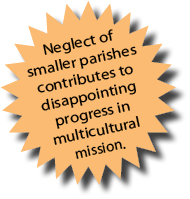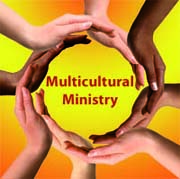 The Church of the last five decades is doomed.
The Church of the last five decades is doomed.
But that it is good news.
We have spent these post-World War years of prosperity building a model for success that only a small percentage of congregations can hope to sustain. Many congregations exist and serve amid this atmosphere of hopelessness. It is not uplifting.
There is no need to wallow in this failure, pointing blame at the people, society or the clergy.
It just doesn’t matter. The model of Church as contained in a building and managed by a person trained in theology is about to be replaced. It’s long impending doom is at last being recognized. It was born of an era when the larger church controlled wealth and a feudal mentality, providing for its support, was ingrained.
When we found ourselves living in capitalist, industrial, corporate economies, it all began to crumble. The maintenance expenses exceeded the means of the communities we intended to serve. People became less and less engaged as more and more was expected.
No need to mourn this passing! What is going to evolve is going to be so much better!
The changes will be enabled by the First Estate (the Church) harnessing the power of the Fifth Estate (the web).
Imagine.
Here are just a few ways the Church is going to be transformed.
STRUCTURE
OLD: A hierarchy manages all education, communication and publishing, assuring that doctrine and tradition are maintained.
NEW: Congregations will seek help beyond denominational lines. It will be readily available to them online at a fraction of the expense.
OLD: A hierarchy oversees the placement of qualified leaders, with long “settled” ministries being the measure of success, making sure their salaries and benefits meet prescribed standards. Meanwhile, these desirable, settled congregations are constantly urged to “transform.”
NEW: Congregations will forsake the single pastor model as poor use of their resources. They will seek qualified help for specific short-term challenges and form ongoing relationships with several pastors. Flexible teams of ministers will serve without affiliating with any one congregation.
MISSION
OLD: A centralized office seeks theologically trained candidates, immerses them in a culture, provides additional training, and places them and their families all over the world. Congregations participate by giving offerings. Missionaries return every few years and make a tour of congregations to solicit continued support.
NEW: Individual congregations will begin to make contact with like-spirited Christians all over the world online. Denomination will be reflected in their actions not in their management. Many members will correspond, share and pray for one another with weekly engagement. Members of all ages will be online pen pals with multiple Christian fellowships. Eventually, congregations will raise money to send a few members of the congregation to visit, strengthening bonds begun online. The network of online churches will crisscross the world.
WORSHIP
OLD: Large structures with a dedicated building, common liturgy and accepted “playlist” of hymns is replicated across the country every few miles. One certified theologian is given status to repeat the words of our Lord from the Bible. Church members participate in assigned roles. Their names are listed a month in advance in the bulletin.
NEW: The structure of worship will embrace many cultures. Multiple church members will lead. Sermons will be preached online by the best articulators of the Word. Local discussions will elaborate on the Word. Members will become accustomed to weekly, spontaneous participation. Published liturgies and hymnals will be passe.
EDUCATION
CURRENT: Sunday School begins at age three and ends at age nine with desperate attempts to fill in the gap between childhood and old age with confirmation, youth ministry, singles clubs, and adult forums, following expensive curricula supplied by church hierarchy. Less than five percent of the congregation participate.
NEW: Churches, via their web sites, will link members to meaningful online forums, supplementing them with local engagement either online or in church. Short daily learnings will replace hour-long classes. Congregations linked online will share their resources and traditions.
STEWARDSHIP
OLD: Church members are encouraged to pledge to the maintenance of their building and sustenance of their clergy. Regional bodies, seminaries, and various social service entities within the church beg for additional funds. The national church adds to the appeal for dollars supplied by the same small pool of people.
NEW: Church buildings will have to multi-task their usage in the community to afford their cost. Many communities will rent or borrow appropriate space in the neighborhood. Regional bodies will provide fewer direct services. Their staffs and budgets will be trimmed substantially. Church social service agencies will completely abandon church affiliation as they recognize that cord was cut when they began seeking public funding. Congregations will choose to support service agencies that resonate with their sense of mission, regardless of their affiliation with religion. This will be an opportunity for church members to personally witness in the secular environment.
CHURCH MEMBERSHIP
OLD: Members are expected to attend worship regularly and to live within an easy commute of a church building.
NEW: Members can be anywhere in the world and participate in community online. Online statistics will be published along with membership and giving numbers.
TODAY
Much of this is already happening. 2×2 is part of this evolution revolution and already experiencing many of these transformations.









